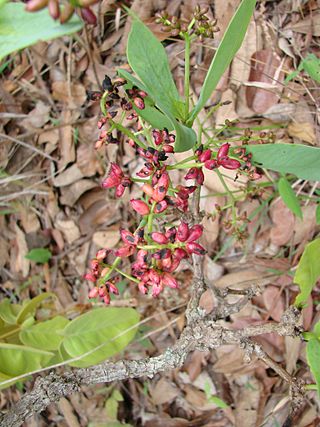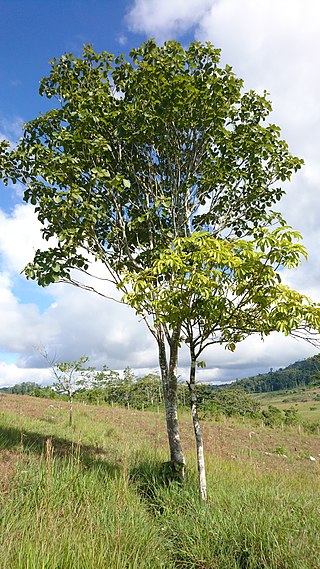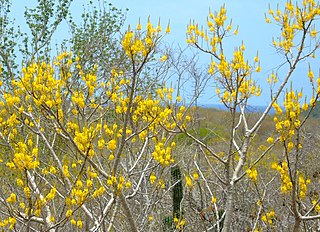
Alternanthera is a genus of flowering plants in the family Amaranthaceae. It is a widespread genus with most species occurring in the tropical Americas, and others in Asia, Africa, and Australia. Plants of the genus may be known generally as joyweeds, or Joseph's coat. Several species are notorious noxious weeds.
Dussia is a genus of flowering plants in the family Fabaceae. It includes 11 species native to the tropical Americas, ranging from central Mexico to Bolivia and west-central Brazil.

Lennea is a genus of legume in the family Fabaceae. It contains three species native to central and southern Mexico and Central America.

Gonzalagunia is a genus of plant in the family Rubiaceae.

Ladenbergia is a genus of plant in the family Rubiaceae.

Neea is a genus of plants in family Nyctaginaceae from the Caribbean region, Central and South America. Members of the genus are commonly called Nia, Neea, or saltwood.

Rustia is a genus of flowering plants in the family Rubiaceae. There are 17 species distributed in tropical Central and South America. They are shrubs and trees up to 15 metres (49 ft) tall.

Simira is a genus of plants in the family Rubiaceae. The genus was first published by French pharmacist and botanist Jean Baptiste Christophore Fusée Aublet in Hist. Pl. Guiane vol.1 on page 170 in 1775.

Paul Carpenter Standley was an American botanist known for his work on neotropical plants.
Conrad Vernon Morton was an American botanist, who did notable writings on ferns. He was also a specialist in Gesneriaceae and Solanaceae for the Smithsonian Institution from 1928.

Conzattia is a genus of flowering plants in the legume family, Fabaceae. It belongs to the subfamily Caesalpinioideae.

Voyria, commonly known as ghostplants, is a genus of 20 species of herbaceous perennial plants, belonging to the family Gentianaceae. They are mostly native to warm temperate and tropical regions of the Caribbean, Central America and South America, except for V. primuloides, which is found in West and Central Africa. V. parasitica reaches as far north as the Everglades in Florida.
Sidney Fay Blake (1892–1959) was an American botanist and plant taxonomist, "recognized as one of the world's experts on botanical nomenclature."

Pentagonia is a genus of over 40 species of plants in the coffee or gardenia family (Rubiaceae). Pentagonia species are native to Central America and northern South America, and grow in moist tropical forests below 900m. The genus was first described by George Bentham in 1845. Pentagonia are typically small monopodial trees up to 8 meters tall, but some are much-branched trees up to 18 meters tall. The genus is noteworthy for its large, entire and strongly carinate, interpetiolar stipules and large leaf blades, up to at least 200 cm long, with the leaf surfaces being distinctly and closely striate with fine epidermal fibers.

Carapichea is a genus of flowering plants in the family Rubiaceae. It is native to Central America and northern South America from Nicaragua to Brazil. One species, Carapichea ipecacuanha, is used medicinally as the source of ipecac, a powerful emetic.

Forchhammeria is a genus of plants in the order Brassicales. This genus has previously been placed in the Stixaceae and Capparaceae, but under the APG IV system is now included in the family Resedaceae. Species can be found in Central America and the Caribbean.

Coussapoa is a genus of flowering plants belonging to the family Urticaceae.

Malanea is a genus of flowering plants belonging to the family Rubiaceae.
Schoenobiblus is a genus of flowering plants belonging to the family Thymelaeaceae.
Machaonia erythrocarpa is a species of flowering plant in the family Rubiaceae, native from Mexico through Central America to Panama. It was first described by Paul Carpenter Standley in 1940 as Allenanthus erythrocarpus. Allenanthus hondurensis is a synonym of one of its subspecies.














